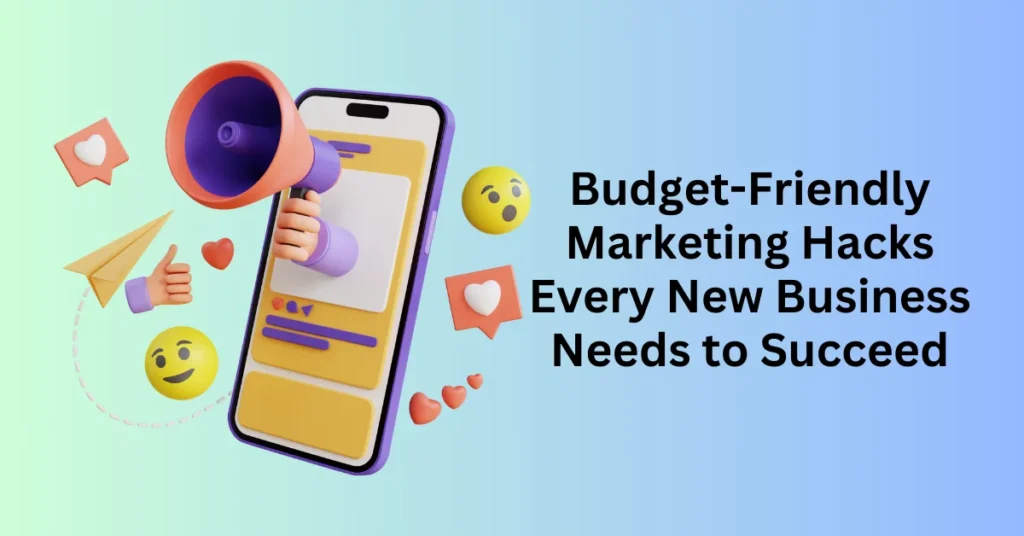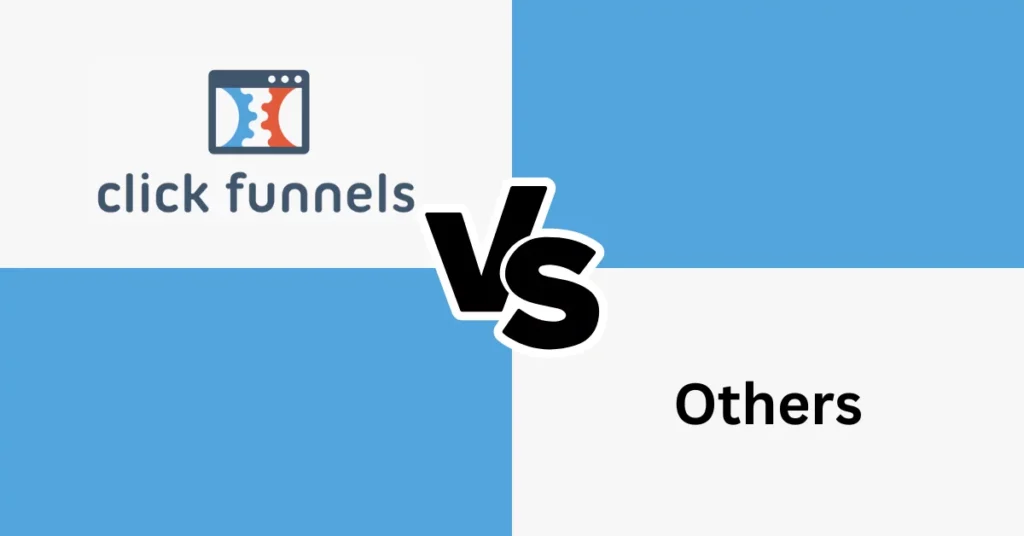Starting a new business is exciting, but let’s face it—marketing on a tight budget can feel overwhelming. With limited resources, how do you get your brand in front of the right audience and stand out from the competition? The good news is that effective marketing doesn’t have to cost a fortune. Whether you’re launching a small business or testing the waters of entrepreneurship, there are plenty of affordable (and even free!) strategies that can help you build brand awareness, attract customers, and grow sustainably.
In this guide, we’ll explore practical, cost-effective marketing tips tailored for new businesses. From leveraging social media and content marketing to mastering email campaigns and networking, these tips will empower you to make the most of your budget while creating a lasting impact. Ready to make your marketing dollars work harder for you? Let’s dive in!
Budget-Friendly Marketing Strategy 1: Launching a Cold Email Campaign

Cold emailing is one of the most cost-effective ways to acquire your first customers, especially if you’re working with a tight budget and can’t afford paid advertising. By systematically reaching out to a targeted audience and refining your approach, you can jumpstart your business and start generating revenue. Here’s how to launch an effective cold email campaign in just five steps:
Step 1: Define and Build Your Target Audience
Start by clearly defining your ideal customer. Think about specific criteria such as industry, job title, company size, or location. Once you have a clear profile, hire a lead generation expert on platforms like Fiverr to compile a high-quality list of at least 100 leads that match your criteria. Ensure the list includes accurate contact information to maximize your outreach success.
Step 2: Set Up and Optimize Your Email Account for Marketing
To improve the chances of your emails reaching inboxes instead of spam folders, create a dedicated email account for outreach. Use tools like Lemwarm to “warm up” the account by gradually increasing email activity and building sender’s reputation. This small but critical step helps improve delivery rates and ensures your efforts don’t go to waste.
Step 3: Craft and Personalize Your Email Templates
Design a cold email template that is clear, concise, and engaging. Structure it as follows:
- Introduction: Briefly introduce yourself and explain why you’re reaching out.
- Value Proposition: Highlight how your product or service solves a specific problem for the recipient.
- Call to Action: Invite the recipient to schedule a quick 15-minute call, including a link to your calendar for easy booking.
Don’t forget to create follow-up templates to re-engage leads who don’t respond initially. Plan for three follow-up emails spaced one week apart, followed by a “breakup” email to politely close the conversation if there’s still no response.
Step 4: Launch Your Marketing Campaign and Track Results
Begin your outreach by sending a manageable number of emails per day—start with 10 and include follow-ups as part of your workflow. For each lead, send the initial email, three follow-ups, and a final breakup email if needed. Track your campaign using a spreadsheet or a tool like Lemlist, monitoring key metrics such as:
- Response rates
- Calls scheduled
- Sales closed
This data will help you evaluate your campaign’s performance and identify areas for improvement.
Step 5: Experiment, Optimize, and Scale
Once your initial campaign is complete, analyze the results and refine your approach. Experiment with one variable at a time, such as your subject line, email copy, or call-to-action phrasing, to see how it impacts response rates and conversions. After optimizing your process, gradually increase your email volume. Aim to send up to 100 emails per day (including follow-ups), which could yield approximately 30 sales per month from 3,000 emails.
As you start generating revenue, reinvest in more scalable marketing strategies like paid advertising or content marketing to further grow your business.
Cold emailing may require effort and persistence, but it’s a highly effective way to connect with potential customers and kickstart your business. By following these five steps and continuously improving your outreach process, you can build momentum and create a solid foundation for future growth.
Budget-Friendly Marketing Strategy 2: Social Media Marketing
Social media marketing is an incredibly effective way to connect with your target audience, establish trust, and guide them toward your lead magnet landing page. The best part? You don’t need to spend a dime to get started. While you can start completely free, investing in social media management tools can streamline your efforts as your presence grows.

Here’s how to create an impactful social media strategy without breaking the bank. Rather than spreading yourself too thin, concentrate on building a strong following on one social media platform. Once you’ve established a presence and workflow, you can gradually expand to other platforms to maximize your reach.
Regardless of the platform you choose, the following strategies will help you optimize your efforts:
1. Use Your Bio to Promote Your Lead Magnet
Your social media bio is prime real estate. Use this space to highlight your free offer and link directly to its landing page. Make it crystal clear how your lead magnet solves a problem or adds value for your audience.
When someone connects with your content and resonates with your message, they’re much more likely to take the next step and explore what you’re offering.
2. Consistently Share Value-Packed Content
Your social media posts should offer solutions to challenges your audience faces within your niche. Aim for high-quality, original content that educates, entertains, or inspires.
A great rule of thumb is to post once daily, seven days a week. Batch your content creation by setting aside a few hours each month to plan and design your posts. Use scheduling tools like Buffer or MeetEdgar to keep your content flowing, even when you’re busy.
Don’t forget to engage with your audience by replying to comments. Dedicate 15–30 minutes daily to interact with followers, except for trolls—ignore and block them without hesitation.
3. Build Relationships with Key Influencers
Identify influential figures in your niche and make an effort to engage with their content. Leave thoughtful comments on their posts, share their updates with your followers, and add meaningful insights to your shares.
For example, on Twitter, opt for quote tweets instead of standard retweets to add extra value to your reposts. By consistently contributing to the conversation, you’ll increase your chances of catching an influencer’s attention. Over time, they may check out your profile, follow you back, and even share your content with their larger audience, accelerating your growth.
4. Connect with Emerging Creators in Your Niche
While networking with established influencers is important, don’t overlook fellow creators who are on a similar journey as you.
Engage with their content by commenting and sharing their posts. Once you’ve built some rapport publicly, don’t hesitate to reach out via direct messages. While most of these connections may not immediately yield results, a few will likely grow into valuable collaborations as both of your audiences expand over time.
5. Build Goodwill by Offering Free Help
As your audience grows, people will naturally reach out to you for advice or assistance. Take the time to respond to these messages thoughtfully and provide genuine value.
Share helpful resources, answer questions, and if feasible, offer brief one-on-one calls. The more people you assist without expecting anything in return, the more goodwill and trust you’ll build—key ingredients for long-term success.
6. Avoid Social Media Drama
Every niche has its fair share of drama, often encouraged by algorithms that reward controversial posts with more visibility. However, engaging in disputes or “beefs” can harm your brand’s reputation.
If someone tries to stir up conflict with you, resist the temptation to respond. Instead, block them and focus on maintaining a positive, drama-free presence.
7. Steer Clear of Controversial Topics
While polarizing content can drive engagement, it can also alienate parts of your audience. Unless your brand directly benefits from taking a stand on controversial topics like politics or religion, it’s best to avoid them.
Focus instead on content that unites and benefits your audience, ensuring you maintain a broad appeal.
8. Be Mindful of Audience Capture
Audience capture occurs when creators become overly influenced by their audience’s reactions, losing sight of their original goals and values. Social media’s rapid feedback loops can make this especially tempting.
Pay close attention to what type of content gets rewarded and decide intentionally whether you want to lean into those trends. For instance, a viral hot take might tempt you to post more of the same, but ask yourself: Does this align with my values and long-term business vision?
The key is to remain intentional with your content, ensuring that each post reflects who you are and what you want to achieve.
By following these strategies, you can build an authentic, engaged following that supports your business goals—all without needing a big marketing budget. Social media marketing requires consistent effort, but with the right approach, the rewards can be exponential.
Budget-Friendly Marketing Strategy 3: Email Marketing
Did you know that an email newsletter can serve as an excellent lead magnet? In today’s digital landscape, email marketing remains one of the most effective ways to convert your social media audience into engaged leads. Unlike fleeting social media posts, email newsletters provide a direct, consistent channel to nurture relationships with your audience.
Here’s how to create a successful email marketing strategy that’s both low-cost and highly impactful:
1. Develop a Compelling Newsletter Marketing Concept
Your newsletter should stand out by offering unique value. Take inspiration from successful newsletters like Morning Brew, 5-Bullet Friday, or Reading List, which have gained massive followings by delivering concise, actionable, and engaging content.
The key to creating an irresistible newsletter is to:
- Define your focus: What specific niche or problem will your newsletter address?
- Establish a consistent schedule: Weekly newsletters are a popular choice, but adjust based on your audience’s preferences and the nature of your industry.
- Stick to a predictable format: Whether it’s industry updates, curated resources, or personal insights, having a consistent structure helps subscribers know what to expect.
Keep your content skimmable—busy readers should be able to quickly glance at your newsletter, identify the key takeaways, and dive deeper into the sections that interest them most.
2. Always Include a Call to Action (CTA) in Your Marketing Newsletter
Every issue of your newsletter should subtly guide your audience toward the next step in your sales funnel. Place a compelling CTA at the end of each newsletter, either as a “P.S.” note or a visually appealing banner.
For example:
- If you’re promoting a SaaS product, encourage subscribers to sign up for a free trial.
- If you’re selling digital courses, direct them to a free webinar or resource that sets the stage for your offer.
By the time readers reach your CTA, they’ve already gained value from your newsletter, making them more receptive to your pitch—even if they don’t take immediate action.
3. Promote Your Newsletter on Social Media
Your email newsletter is a lead magnet, so treat it like one. Use your social media bios to clearly explain the value your newsletter provides and include a link to your signup landing page.
To generate interest, post teaser content on your social channels. For example:
- Share a sneak peek of your upcoming newsletter the day before it’s published.
- Post highlights or key takeaways from past issues to showcase the value your audience can expect.
This approach not only helps you grow your email list but also builds excitement around your newsletter’s content.
4. Accept That Growth Takes Time
Here’s a reality check: building a thriving business on a budget requires patience, persistence, and the willingness to play the long game. If you can’t afford to invest money for rapid growth, you’ll need to invest time.
Many entrepreneurs with great ideas give up too early because they don’t see immediate results. The truth is, it often takes years of consistent effort to gain traction and generate enough revenue to work on your business full-time.
To stay on track:
- Keep a day job or alternative income source to cover your living expenses while you grow your business.
- Set realistic goals and timelines for success.
- Focus on long-term sustainability rather than chasing short-term wins.
The journey may be slow, but the payoff will be worth it if you’re committed to seeing it through.
Email marketing remains one of the most cost-effective ways to nurture leads and grow your business. By creating a value-packed, engaging newsletter, promoting it strategically, and staying consistent, you can build a loyal audience that drives your business forward over time.
Stay patient, stay consistent, and remember—every subscriber you gain brings you one step closer to your goals.
Start Your Budget-Friendly Marketing with a Sales Funnel!
A sales funnel is an essential framework for guiding potential customers through a journey—turning casual visitors into leads, nurturing those leads into paying customers, and ultimately transforming those customers into loyal, repeat buyers. If you haven’t created a sales funnel for your business yet, this should be your top priority.
The process begins with creating an irresistible lead magnet—something valuable that your target audience can’t resist. Pair this with cost-effective marketing strategies to attract traffic to your landing page, where visitors can exchange their email addresses for your offer. This not only builds your email list but also sets the stage for meaningful customer engagement.
Once you’ve captured those leads, leverage the power of email marketing to nurture the relationship. Through a series of personalized, value-packed emails, you can guide prospects toward making their first purchase. But the journey doesn’t stop there! After the initial sale, continue offering valuable content, insights, or tips via email to deepen the relationship and keep your brand top of mind. This consistent communication can significantly enhance customer loyalty and retention.
This step-by-step approach isn’t just theoretical—it’s the very strategy we used to scale ClickFunnels from a scrappy startup to a thriving SaaS company generating nine figures in revenue. We’ve seen firsthand how a well-designed sales funnel can drive business growth, and we’re confident it can do the same for you!
Final Thoughts: Budget-Friendly Marketing Hacks Every New Business Needs to Succeed
Launching and growing a new business on a budget may seem challenging, but with creativity and strategic planning, it’s entirely possible to make a big impact without overspending. The key is to focus on methods that align with your goals, take advantage of free or low-cost tools, and consistently deliver value to your audience.
Remember, building a strong brand takes time, so be patient and stay consistent in your efforts. Experiment with different strategies, track your results, and refine your approach as you learn what works best for your business. Affordable marketing isn’t about cutting corners—it’s about being resourceful, connecting with your audience authentically, and making the most of what you have.
With these tips in mind, you’re well-equipped to promote your business effectively and set the stage for long-term success. Keep innovating, stay focused, and watch your small steps turn into significant growth!


